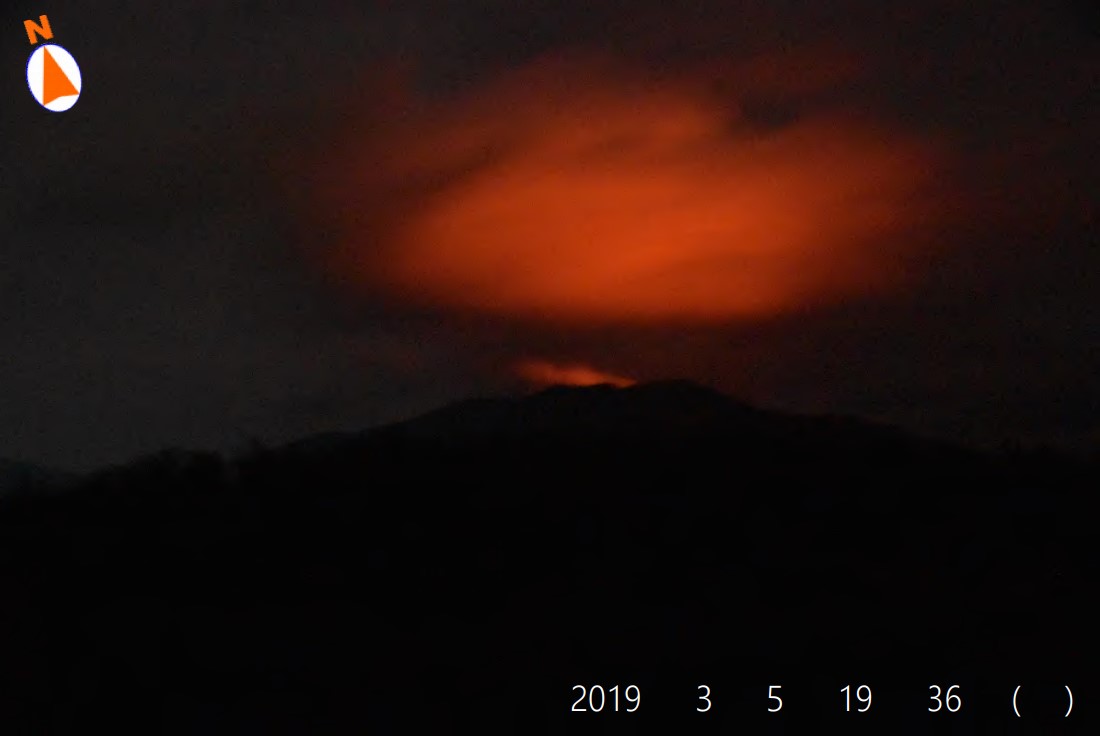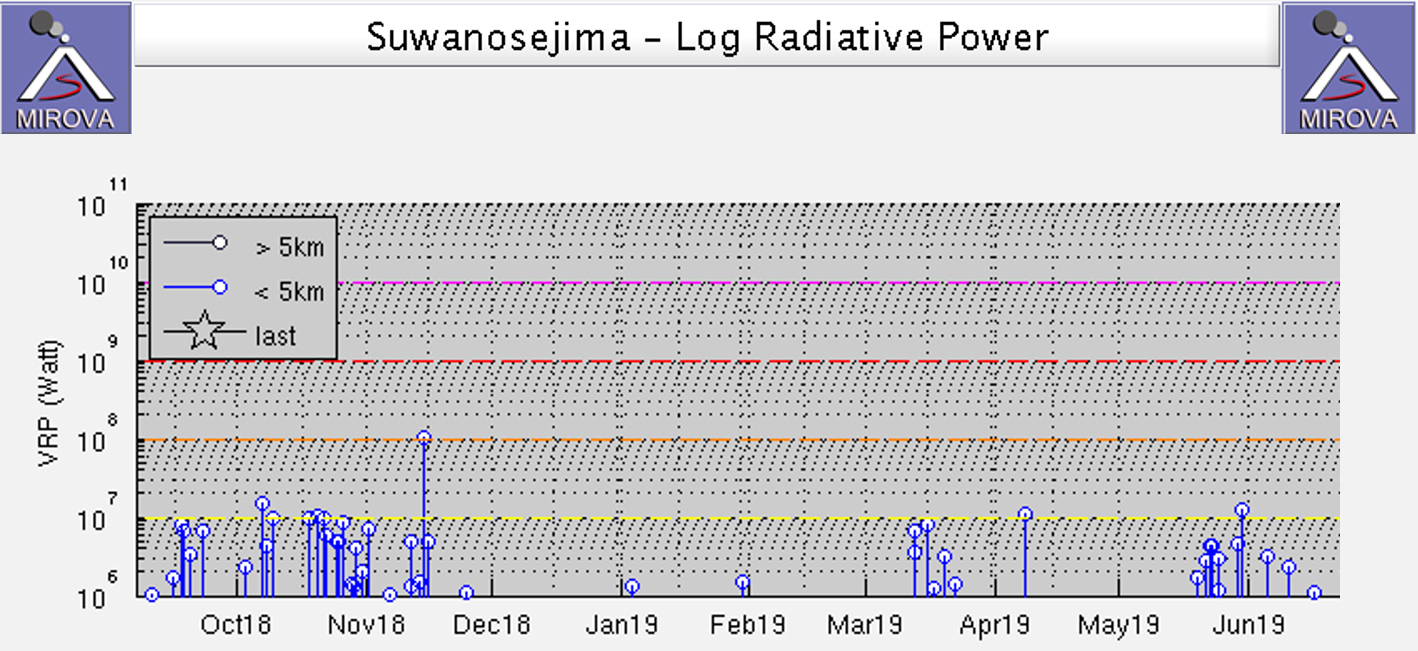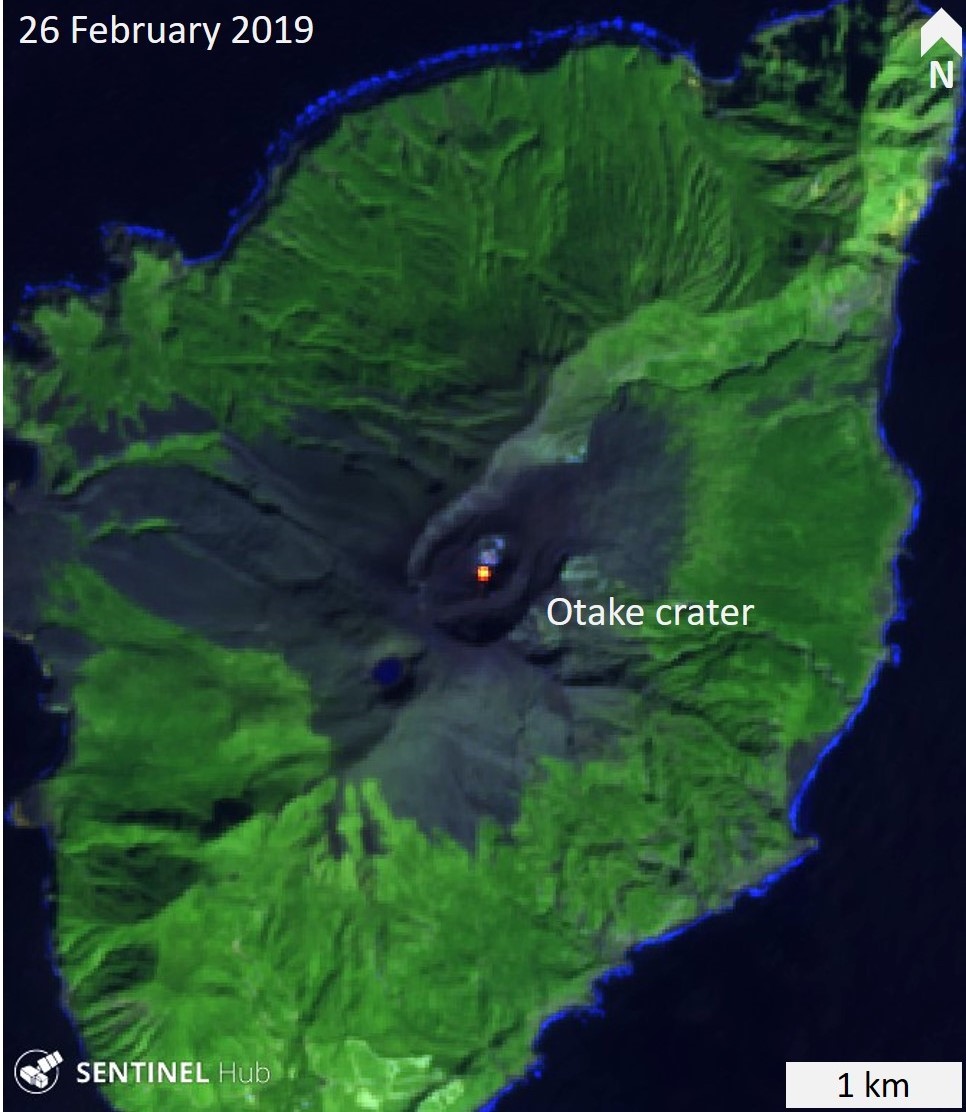Report on Suwanosejima (Japan) — July 2019
Bulletin of the Global Volcanism Network, vol. 44, no. 7 (July 2019)
Managing Editor: Edward Venzke.
Edited by Janine B. Krippner.
Suwanosejima (Japan) Small ash plumes continued during January through June 2019
Please cite this report as:
Global Volcanism Program, 2019. Report on Suwanosejima (Japan) (Krippner, J.B., and Venzke, E., eds.). Bulletin of the Global Volcanism Network, 44:7. Smithsonian Institution. https://doi.org/10.5479/si.GVP.BGVN201907-282030
Suwanosejima
Japan
29.638°N, 129.714°E; summit elev. 796 m
All times are local (unless otherwise noted)
Suwanosejima is an active volcanic island south of Japan in the Ryuku islands with recent activity centered at Otake crater. The current eruption began in October 2004 and activity has mostly consisted of small ash plumes, ballistic ejecta, and visible incandescence at night. This report summarizes activity during January through June 2019 and is based on reports by the Japan Meteorological Agency (JMA), and various satellite data.
Thermal activity recorded by the MIROVA system was low through January and February after a decline in November (figure 36), shown in Sentined-2 thermal infrared imagery as originating at a vent in the Otake crater (figure 37). During January an explosive event was observed at 1727 on the 3rd, producing a gray plume that rose 600 m above the crater. A white gas-and-steam plume rose to 1.5 km above the crater and nighttime incandescence was observed throughout the month. Reduced activity continued through February with no reported explosive eruptions and light gray plumes up to 900 m above the crater. Incandescence continued to be recorded at night using a sensitive surveillance camera.
There was an increase in thermal energy detected by the MIROVA system in mid-March and there was a MODVOLC thermal alert on the 15th. Occasional small explosions occurred but no larger explosive events were recorded. A white plume was noted on the 27th rising to 900 m above the crater and an event at 1048 on the 30th produced a light-gray plume that rose to 800 m. Incandescence was only observed using a sensitive camera at night (figure 38).
 |
Figure 38. Incandescence from the Suwanosejima Otake crater reflecting in clouds above the volcano. Courtesy of JMA (Volcanic activity of Suwanosejima March 2019). |
No explosive events were observed through April. A white gas-and-steam plume rose to 1,200 m above the crater on the 19th and incandescence continued intermittently. Minor explosions were recorded on 5, 30, and 31 May, but no larger explosive events were observed during the month. The event on the 30th produced ash plume that reached 1.1 km above the crater. Similar activity continued through June with one explosive event occurring on the 2nd. Overall, there was a reduction in the number of ash plumes erupted during this period compared to previous months (figure 39).
Geological Summary. The 8-km-long island of Suwanosejima in the northern Ryukyu Islands consists of an andesitic stratovolcano with two active summit craters. The summit is truncated by a large breached crater extending to the sea on the E flank that was formed by edifice collapse. One of Japan's most frequently active volcanoes, it was in a state of intermittent Strombolian activity from Otake, the NE summit crater, between 1949 and 1996, after which periods of inactivity lengthened. The largest recorded eruption took place in 1813-14, when thick scoria deposits covered residential areas, and the SW crater produced two lava flows that reached the western coast. At the end of the eruption the summit of Otake collapsed, forming a large debris avalanche and creating an open collapse scarp extending to the eastern coast. The island remained uninhabited for about 70 years after the 1813-1814 eruption. Lava flows reached the eastern coast of the island in 1884. Only about 50 people live on the island.
Information Contacts: Japan Meteorological Agency (JMA), Otemachi, 1-3-4, Chiyoda-ku Tokyo 100-8122, Japan (URL: http://www.jma.go.jp/jma/indexe.html); Hawai'i Institute of Geophysics and Planetology (HIGP) - MODVOLC Thermal Alerts System, School of Ocean and Earth Science and Technology (SOEST), Univ. of Hawai'i, 2525 Correa Road, Honolulu, HI 96822, USA (URL: http://modis.higp.hawaii.edu/); MIROVA (Middle InfraRed Observation of Volcanic Activity), a collaborative project between the Universities of Turin and Florence (Italy) supported by the Centre for Volcanic Risk of the Italian Civil Protection Department (URL: http://www.mirovaweb.it/); Sentinel Hub Playground (URL: https://www.sentinel-hub.com/explore/sentinel-playground).




